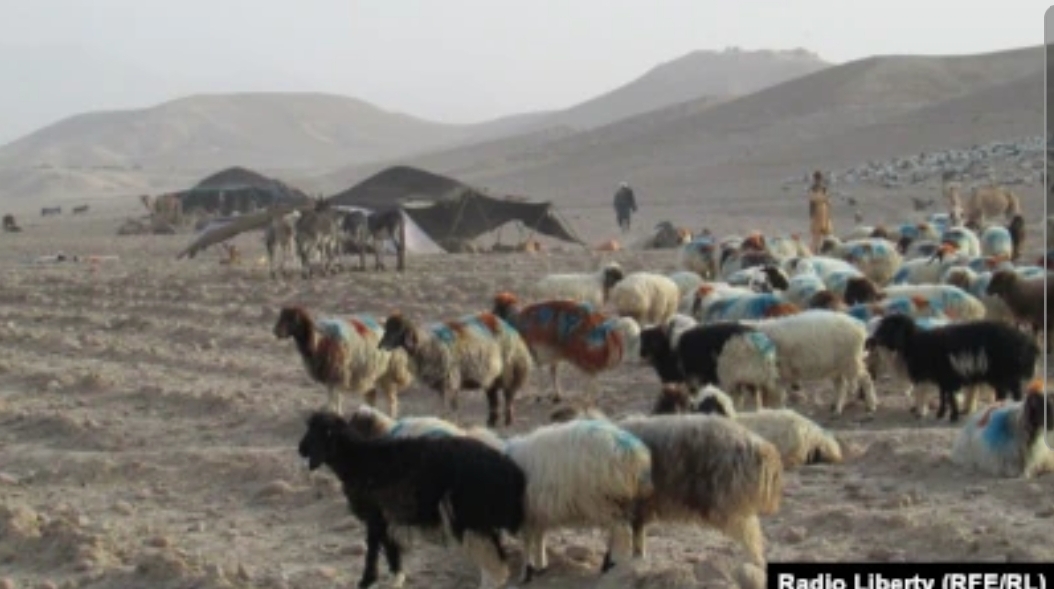Taliban Support for Kuchi Land Grabbers Could Bolster Resistance

A Kuchi camp (file photo)
Michael Hughes
December 31, 2022
The Taliban have much to gain – both economically and militarily – by enabling the Kuchis, Pashtun nomads, to seize land and build homes within sedentary communities in Hazarajat and other areas in the country’s northeast. However, the strategy is also pregnant with risk: for land disputes have historically been known to spark insurgencies, a development that would offset much of the benefit derived.
Earlier this month, Hasht-e Subh reported that Kuchis in Ghazni’s Jaghatu district have accelerated the construction of houses on the Shia minority group’s pasture lands with de facto support from the Taliban, a Sunni radical movement made up almost entirely of Pashtuns. The Taliban, the report added, seek to control precious mines of lithium, marble and gypsum in the borders of Jaghatu and Nawur districts while depriving the local populace access.
According to locals, the town is based in a strategic area which would afford control of agricultural resources and commuting routes of several Hazara districts. The Taliban also said a military camp would be built in the district, the report added.
Tensions over Kuchi claims to land in the Hazarajat, a historical region in central Afghanistan that spans the provinces of Bamyan, Ghor, and Daikundi, and touches parts of nine others including Ghazni and Maidan Wardak, have a long history. However, the central government sponsoring – de facto or otherwise – construction of homes and military camps might mark a new escalation in the mountain pasture standoff.
Moreover, for the first time since 2001, “the route to the highland pastures lay open and a greater number of Kuchis than in any previous year moved into Hazarajat,” Fabrizio Foschini of the Afghanistan Analysts Network (AAN) wrote in an analysis last week.
“Some even reached the Bamyan districts of Panjab and Waras, in the innermost part of Hazarajat, where some of the most prized pastures that the nomads lay claims to are located,” Foschini said.
According to Foschini, the Kuchis, emboldened by their Taliban backers, grounded their land claims in decrees of Afghan kings – from the “Iron Amir,” Abdur Rahman Khan (r. 1880-1901) to Zahir Shah (1933-1973). Some Kuchis have tried to collect so-called debt payments of up to $52,000, AAN said, including backpay with interest, retroactive to 1979.
Kuchi claims of rights over the summer pastures can be traced to 1892-1893, when the Iron Amir deployed some 40,000 troops into the Hazarajat to subjugate the populace as part of a broader Pashtunization program, according to Liz Alden Wily of the Kabul-based Afghanistan Research and Evaluation Unit (AREU). Up to that point the Hazaras were nearly independent, secure in a mountainous region where the writ of the central government extended in name but not effect.
Pashtunizing was not the only motivation – the Iron Amir saw strategic displacement of different ethnic groups as a method for preventing uprisings. Abdur Rahman felt the need to end the Hazara independent streak he perceived as a threat among many to his mission to pacify Afghanistan – one highlighted by the thwarting of some 40 rebellions countrywide. The tactic went beyond the Kuchi-Hazara conflict as well. For example, he also uprooted “troublesome” sedentary Pashtuns in the east and south and transported them to Uzbek and Tajik-populated areas in the north. The transplants could also act as spies on behalf of the central government.
In the 1920s, Amanullah, the reformist-minded king, was unsuccessful in completely reversing the theft but only recognized the Kuchis’ “user-rights” of the pastureland. Amanullah’s decision, explained Afghan writer Nasrat Esmaty, was largely upheld until the anti-Soviet jihad erupted in 1979. The Hazaras were able to defend the pasturelands for the next 20 years, including during the post-Soviet civil war with the Northern Alliance controlling Kabul.
However, during the rule of Mullah Omar, when the Taliban sought to ethnically cleanse the Hazara, the radical movement confiscated land in the region to hand over to the nomads, including wheatfields for Kuchi flocks to graze. Taliban-backed armed Kuchis enforced resettlement of the nomads in the Hazarajat, Amnesty International said in a 1999 report.
After the Taliban ouster in 2001, Hazarajat’s summer pastures again became “forbidden fruit” for the Kuchis, as Foschini put it, although the nomads continually tried to enter the region. Since 2007, confrontations have erupted yearly on Hazarajat’s borders. Tensions reached new heights in 2010 with deadly clashes that left ten dead and 12,000 residents displaced.
Not unlike the Iron Amir, the Taliban see the Hazaras as a potential pocket of resistance. Hence, in addition to exploiting mineral resources and religio-ethnic structural oppression, the Taliban could be exploiting the return of Kuchi nomads and underwriting their land claims to secure political and military control.
However, the AAN analyst pointed out that Afghanistan’s land disputes always have the potential to “blow up into something bigger,” with the risk of grievances leading to wider conflict.
“In the end, the Taliban should know how central a role land disputes and disgruntlement over their outcomes can play in fueling communities’ disaffection with the government and fanning possible insurgency,” Foschini concluded. “After all, they themselves, for nearly two decades, benefited from such conflicts in their struggle against the Republic and its foreign allies.”
